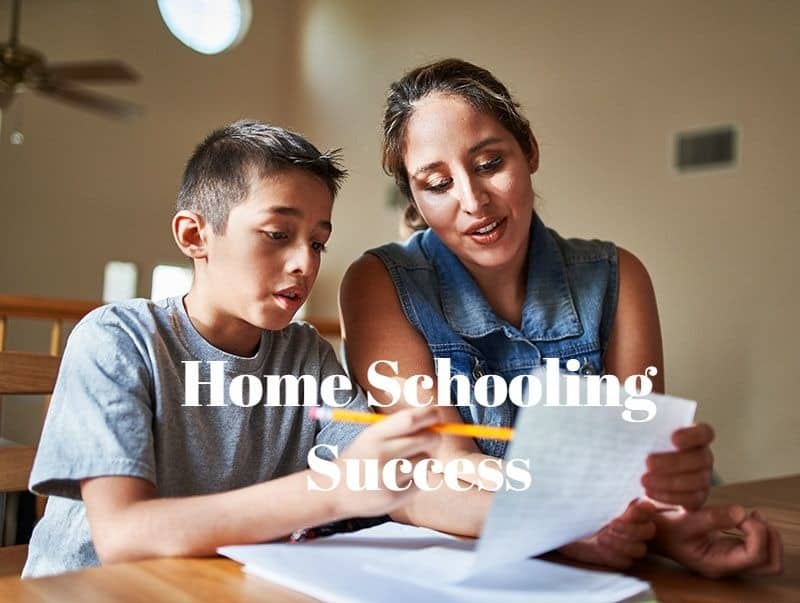For many different reasons, parents may choose to teach their children at home this Fall. Even with time spent in the classroom, there are many hours in a week when children are at home, and this is time that can be captured for enriching a child’s mind.
Anyone can become a resourceful teacher
Although we may not all be professional teachers, with a little creativity, we can make use of everyday opportunities and common materials to create fun and educational experiences for our children. By doing so consistently, we can create and sustain an enriching home learning environment for our children.
As a former school teacher, now an education professor and part-time homeschooler, I have experienced both classroom and home-based ways of teaching and learning. The good news is – both environments can be very effective, and very enjoyable for children.
How to turn the home into a classroom
Here are some ideas for parents and caregivers looking to create positive home learning experiences.
Tip 1: Keep the relationship first
Homeschooling parents have an interesting role of being both a parent and a teacher. When I was a teacher in training, one of the first expressions I encountered was the term in loco parentis. It is Latin for ‘in the place of a parent’ and it refers to the legal responsibility a school teacher has to take on some of the roles and responsibilities of a parent.
As a parent who is also their child’s teacher, this term takes on even greater significance. Why? Because you are not replacing anyone, you are the authentic parent-teacher, the one who has the very best intentions for your child. When your neighbor enquires about your teaching at home, and they ask, “What do you teach?” Do not reply, “I teach math, history,” or any other subject for that matter. The subject is not the primary focus but rather your child. You teach your child first and foremost, they are primary, and the subject is secondary. Try to remind yourself that your child comes first: you teach your children, and then you teach the subject. That is how you nurture a healthy relationship with your children.
Tip 2: Mind the emotions
Some days, your child might be moody or uncooperative. Sometimes a child doesn’t want to engage no matter what strategy you use. That is OK.
It is important to remember that certain emotions can create barriers for learning. Research shows that anxiety around math, for example, lowers performance. To create an optimal learning environment, consider incorporating ways to build positive emotions into lessons. A good way to do so may be through games or rewards.
Tip 3: Go on a learning trip
When things don’t go as planned, it might be worthwhile to take a breather, or switch up the lesson approach. Try doing something else that is correlated to the original lesson, such as going out on an excursion.
When my children are having trouble concentrating in math, I might give them $5 each and then we head off to the local food store. We make it into a game, and I challenge them to use the money to purchase as many items as possible, or the healthiest items, the sweetest, and the list goes on. Just have fun and enjoy being together.
Tip 4: Stand up, use vertical surfaces
Did you know that standing up and writing on a non-permanent surface can increase learner engagement? Research suggests that enthusiasm, discussion, participation, and persistence all trend upwards when students used non-permanent surfaces, and in particular while standing in a vertical position.
Try using a vertical whiteboard or chalkboard to teach and learn, or even just a window.
Tip 5: Incorporate everyday math
Another outside activity, which children seem to love doing and brings us close together, is recording and graphing the motor vehicles and bicycles that drive by our home. But before I do this activity, this is what I first do. I visit the BC Curriculum website, which is a public domain that anyone can access. Find it at https://curriculum.gov.bc.ca/curriculum/mathematics/3/core.
I look up the subject (curriculum overview) and grade level for my child. So in my situation, one of my children is in Grade 3, so I click on Mathematics 3. I then look over the 5 Big Ideas that are listed at the top of the page. I choose one and only one. Why? I want to go deep with the learning and trying to cover too much will stop that from happening.
I then click on outcomes which is about collecting and analyzing data. This is prefect because I know the outside activity I want to do requires collecting and analyzing data (information). Analyzing is just a fancy word for discussing, questioning and looking for patterns and explanations. I look down the Content section (notice that I am still on the same page, this is too easy). I am looking for content that is closest to what I am wanting to create outside for my children’s learning. I see the following: Collecting data, creating a graph, and describing, comparing, and discussing the results. Bingo, I now have my outcome. I share the outcome with my children and in words they can understand. This way we both know the goal.
Tip 6: Let the students struggle
Now, I believe that a good educator won’t just tell a child how to do a task, they will allow them to experiment and struggle with it for a while. I ask my children, “How could we work towards achieving this outcome?” I am open to any idea they offer. That said, I offer ideas too but only after they have exhausted their thinking. I then give leadership to the learning, “We could count the colours, size, shapes of the cars and record these, what do you think?” They agree. So I let them record the different attributes of each car that drives by in any way they think is best. I allow them to experience this fully before I introduce a standard way to record and then graph the results, i.e. tally the data (cars) into columns and store the data into a bar, pie or line graph.
Tip 7: Embrace the messiness of learning
Sometimes this self-directed learning turns out to be messy but the idea here is not perfection, the idea is to learn, and learning is often messy and takes longer than expected. That is why authentic learning is such fun. And when I say fun, I don’t mean learning has to be like a Sesame Street episode. It just has to be authentic, meaning the child is allowed to make mistakes and take detours for a while before the parent provides increasing guidance and adult suggestions.
Tip 8: Learn from First Nations wisdom
When I am teaching my children at home or anywhere, I also draw upon the principles taken from the First People’s Principles of Learning. If you haven’t downloaded and printed this chart to place somewhere in your home you should do it ASAP. It is free to download from the First Nation Education Steering Committee (FNESC) and is found at http://www.fnesc.ca/wp/wp-content/uploads/2015/09/PUB-LFP-POSTER-Principles-of-Learning-First-Peoples-poster-11×17.pdf.
My favourite is the one that describes how learning ultimately enriches the entire community, and how learning is both experiential and relational. I read these principles out to my children and ask them which principles we could all work towards as we try and achieve this outcome together.
Tip 9: Power of collaboration
Learning between parent and child is about collaboration. You are both on the same team as they say, and so collaborate and adhere to the same principles. The psychiatrist and author of many books on teaching and learning, William Glasser, had the belief that teachers, which means parents too, should make a promise to their children before every lesson. The promise is, I will never ask you to do anything that is not worth doing, and then explain to the child why it is worth doing. If you can’t think of a good reason then don’t do it. So try some of the ideas mentioned here, you might experience wonderful things transpire between you and your child.
Tip 10: Take care of yourself
And finally, enjoy learning with your child and laugh together. Learning does not occur only between 9am and 3pm, it happens from the time you arise in the morning and retire in the evenings. So my last few tips for parents. Take care of yourself, because when you do, you will have positive expectations and attitudes. Maintain a positive, but realistic goal for your child’s learning. Don’t take it personally. If your child doesn’t want to learn, offer the best hope for achieving the goal. Treading water is better than sinking. This time together is precious and will provide lasting memories for a very long time. Seeing your child learn something for the first time is a truly rewarding experience. So no matter where you live, no matter who you are, no matter if you think you are a patient person or not, you have the curriculum at your fingertips, and you can do this.
Matthew Etherington achieved his Ph.D. in the philosophy of education from Macquarie University in Sydney, Australia while completing doctoral research at the Ontario Institute for Studies in Education (OISE). He is presently a Professor in the School of Education at Trinity Western University, British Columbia, Canada. Matthew is the Director of the Institute of Indigenous Issues and Perspectives (IIIP). His primary interests are in epistemological inclusion in education, Aboriginal pedagogy, outcomes, assessment and philosophy. Matthew has published three books, Changing Careers to Become a Teacher: A Study of Mature Age Preservice Teachers in Career Transition and Foundations of Education: A Christian Vision(editor and author); and What Teachers Need to Know: Topics of Inclusion (editor and author). He writes on a diversity of topics in education and spirituality using a philosophical lens for analysis.
Founded in 1962, Trinity Western University is Canada’s premier Christian liberal arts university dedicated to equipping students to establish meaningful connections between career, life, and the needs of the world.










